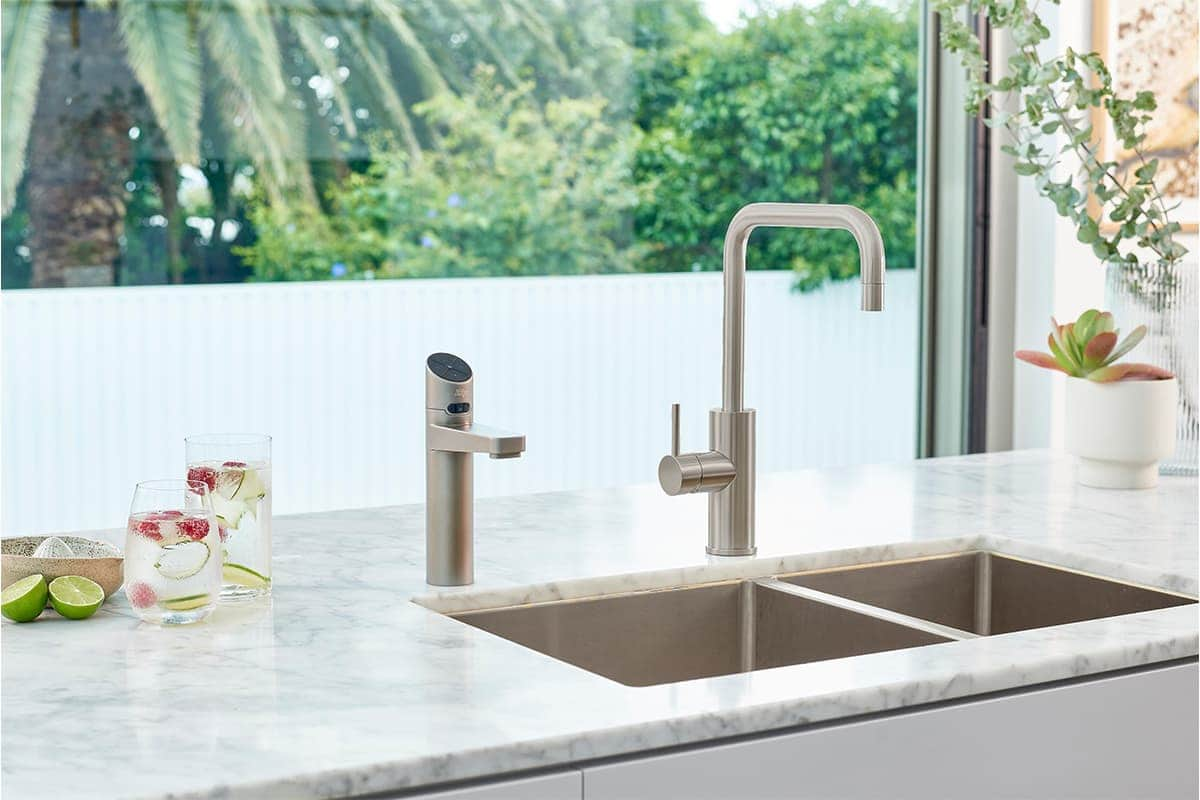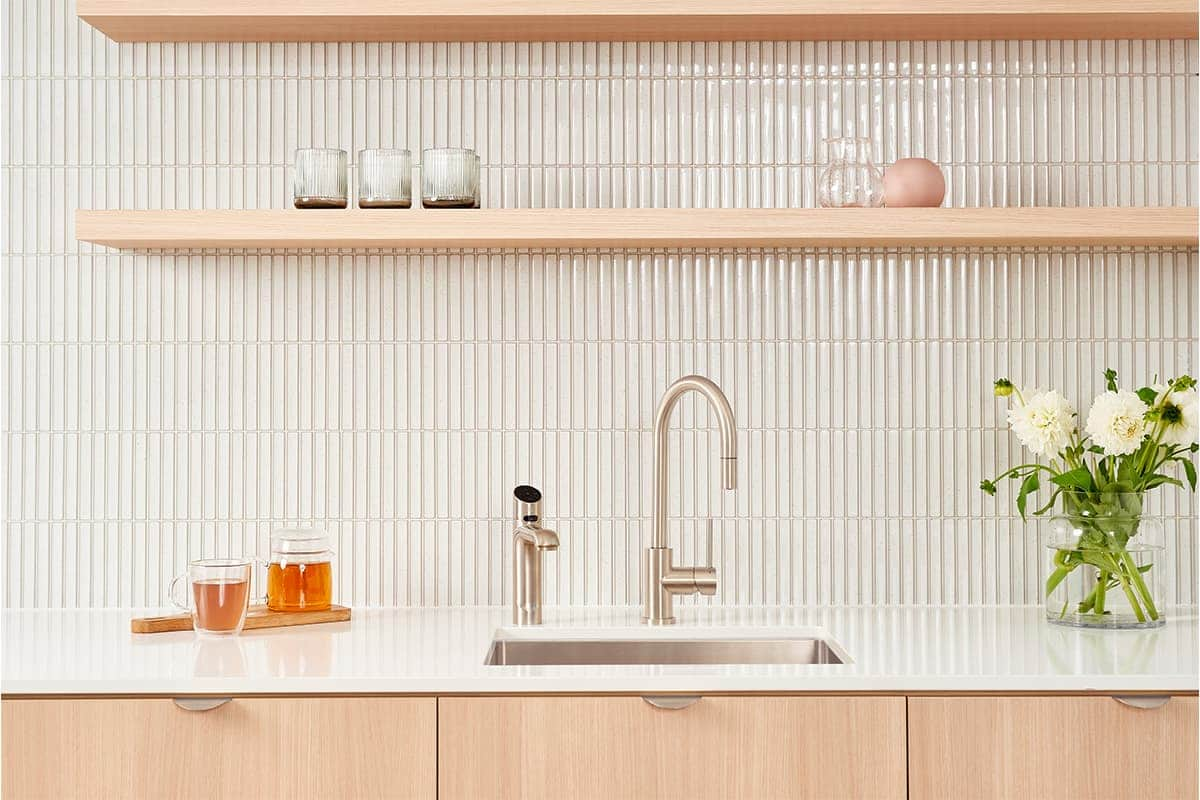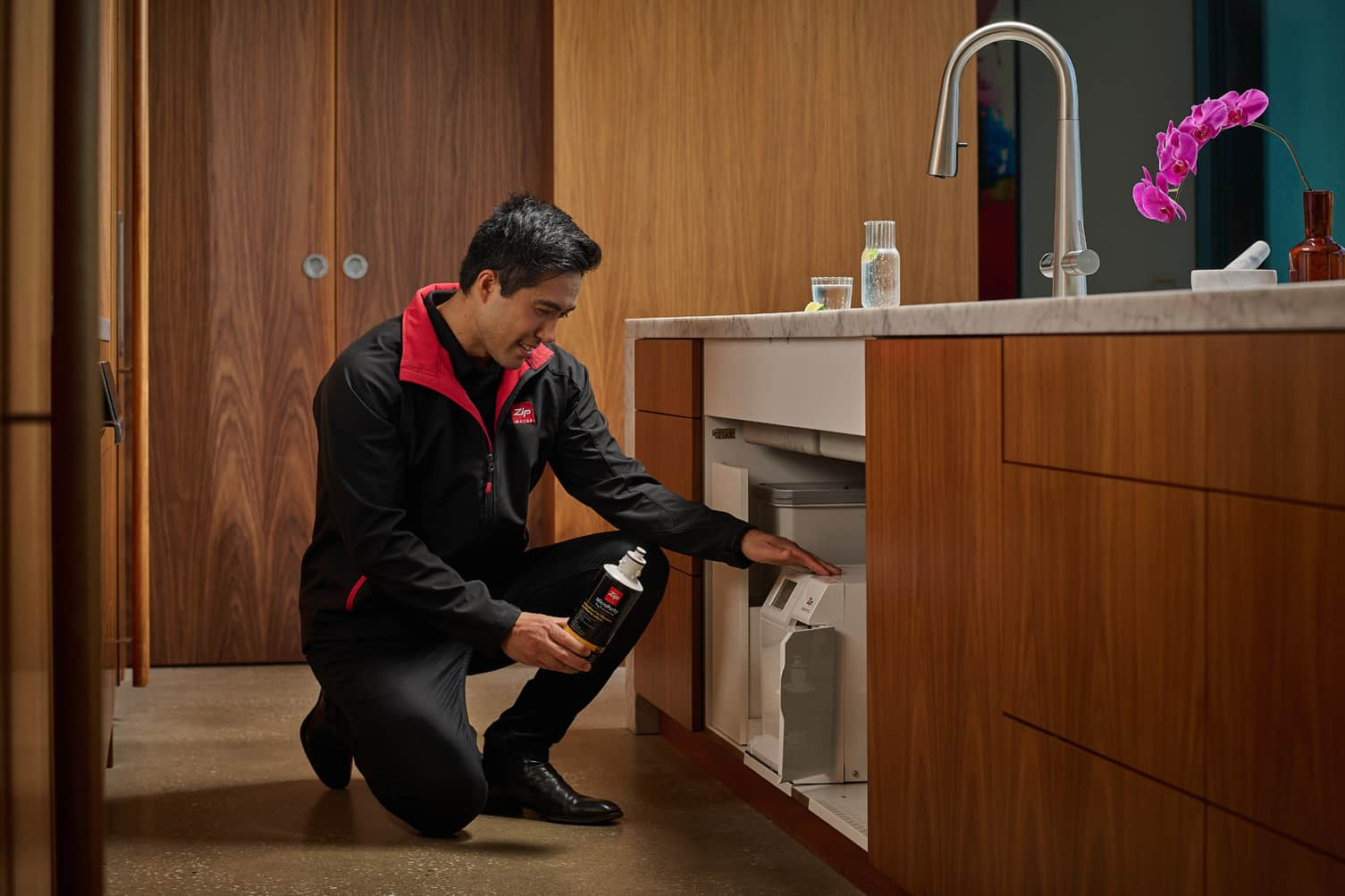How to Make Water Taste Better
Health | 01-10-25

Wondering how to make water taste better? Start with the quality of your water itself. A good filtration system removes chlorine, sediment, microplastics, heavy metals and even emerging contaminants like PFAS, leaving you with a clean, crisp base. Chilling your water or adding a little carbonation can make it feel even fresher.
From there, it’s all about natural flavour. Citrus slices, herbs, berries or even a touch of spice can add variety without sugar. Let’s look closer at how you can make water taste better in the first place, and then the 15 best ways to flavour water.
We’ll cover:
- Why tap water can taste bad sometimes
- How to make water taste better without additives
- 15 ways to flavour your water
- Kitchen changes you can make to make your water taste better
- Taste troubleshooting checklist
- What it all means for Australian water
- How to enjoy better-tasting water at home
- And some helpful FAQ
Why tap water sometimes tastes off (and what it means for flavour)
If your tap water doesn’t taste great, you’re not imagining it. The Australian Drinking Water Guidelines keep water safe across the country, but the flavour can vary depending on where you live, and even how you store it.
- Chlorine odour: Chlorine is vital for safety (it’s added to disinfect your tap water), but it can leave a pool-like taste.
- Mineral hardness: In some areas, higher levels of calcium and magnesium can give water a chalky edge. Learn more about hard water vs soft water.
- Pipes and stagnation: Water that’s sat in old pipes, or in warm pipes on hot days, can pick up metallic notes.
- Fridge and ice odours: If bottles or ice absorb smells from nearby food, the water tastes off before you even sip it.
- Emerging contaminants: Substances like PFAS don’t necessarily alter flavour, but their presence makes water feel less trustworthy.
Fix the base first (quality upgrades that make water taste better)
If your water doesn’t taste right, no amount of lemon slices is going to fix it. You need to start with the base. The first step is filtration.
Filtration
That’s what takes out the pool-like chlorine whiff, the gritty bits you sometimes see at the bottom of a glass, and the invisible contaminants you don’t want to think about – microplastics, heavy metals, even PFAS. Zip’s MicroPurity filters strip those out while leaving the good minerals in. The difference is obvious: water tastes clean and smooth.
Temperature
Chilled water feels more satisfying, especially in an Aussie summer. Around 4-10°C is the sweet spot – crisp, refreshing, and easy to drink without thinking twice. At home, chilled water taps deliver that instantly: cold without crowding your fridge.
And then there’s boiling water. Not for taste alone, but for what it lets you do (fresh teas, herbal infusions, quick comfort on a cool night). Instant boiling taps make that easy, no kettle needed.
Carbonation
A bit of fizz makes water feel more lively. It’s the same reason sparkling helps people swap soft drinks – bubbles feel more indulgent. Having sparkling water on tap means you can enjoy that any time without stocking the pantry with bottles.
Once your water tastes clean, cold, or sparkling-fresh straight from the source, everything else you add (fruit, herbs, spices) is a bonus.
How to flavour water: 15 favourite ways
Once your base water tastes clean and fresh, you can have some fun. Natural flavour infusions make it easier to drink more (without sugar or artificial sweeteners). Here are 15 ideas to try at home, whether you prefer still or sparkling.
Fruits
1. Citrus trio
Lemon, lime and orange slices brighten water instantly. Slice thin, squeeze lightly to release zest oils, and avoid too much pith (that’s where bitterness hides).
2. Berry burst
Strawberries, raspberries or blueberries add gentle sweetness. Muddle lightly for more flavour, or freeze them into ice cubes for a slow release.
3. Cucumber + lime
A classic spa combo – crisp, cooling and refreshing. Works beautifully with sparkling water.
4. Watermelon + mint
Crush a few cubes of watermelon and pair with fresh mint. It’s light, summery and a crowd-pleaser.
5. Pineapple + ginger
Sweet and spicy. Add a few pineapple chunks and thin ginger slices for a tropical lift.
Herbs
6. Mint
Fresh mint is the easiest way to liven up a glass. Add lime or cucumber to make it even more refreshing.
7. Basil + strawberry
An unexpected pairing. The herbal note of basil makes berries taste sweeter.
8. Rosemary + grapefruit
Aromatic and grown-up. Rosemary sprigs add depth to grapefruit slices – perfect for sparkling water.
9. Lemongrass + lime
Chop stalks into short lengths and bruise slightly. The result is a crisp, Southeast Asian-inspired infusion.
Spices and tea
10. Ginger coins
Fresh ginger slices add warmth and zing. Combine with lemon or pear for balance.
11. Cinnamon + apple
Drop a stick of cinnamon and a few apple slices into a jug. It’s comforting, especially chilled overnight.
12. Hibiscus “tea” (cold brew)
Soak dried hibiscus petals in cold water for a few hours. The ruby-red colour is striking, and the flavour is tart and refreshing.
13. Green tea (cold brew)
Steep green tea leaves or bags in cold water for 4-6 hours in the fridge. The result is smooth and subtly tannic.
Extras and pro tips
14. Infused ice
Freeze herbs or fruit pieces into ice cubes. As they melt, the flavours release gradually – and your glass looks beautiful.
15. A tiny pinch of mineral salt
Just a pinch can make water taste sweeter by enhancing natural flavours. Use sparingly – it’s about balance, not saltiness.
Our top tips for infusions:
Kitchen and gear changes to make water taste better
Sometimes it’s not the water itself, but what it touches. A few simple tweaks in the kitchen can make a big difference.
- Choose glass or stainless steel bottles. Plastic can hold onto odours, especially if it’s been in the sun or dishwasher.
- Keep a lidded glass jug in the fridge. It keeps water cold and stops it from picking up smells from nearby food.
- Clean bottles and lids weekly. Old sponges and brushes can also carry flavours you don’t want in your drink.
- Use fresh ice.. Ice cubes soak up freezer odours fast – store them in a sealed container and toss out any that taste stale.
- Flush the tap before filling. Let it run for 30 seconds, especially first thing in the morning, to clear any water that’s been sitting in pipes.
- Descale your kettle. Mineral build-up can affect hot water taste, which matters if you’re making herbal infusions.
Small changes, but they keep every glass tasting cleaner and crisper.
Taste troubleshooting checklist
If your water doesn’t taste quite right, here are the most common culprits (and what you can do about them).
Chlorine smell or “pool” taste
Chlorine is added for safety, but it can linger. Try certified carbon filtration and keep your water chilled.
Metallic tang
Often from water sitting in old pipes. Use only cold tap water, flush for 30-60 seconds before filling bottles, or filter it.
Musty or earthy notes
Usually from stagnant pipes, dirty bottles, or old ice. Clean bottles weekly, refresh ice, and consider a filter for consistency.
Flat or warm taste
Water sitting in pipes or left on the bench can feel lifeless. Chill it in a glass jug for a crisper experience.
Invisible contaminants (like PFAS)
These don’t change taste, but they may change how much of your tap water you actually want to drink. Only advanced filtration can remove them effectively.
The Australian context
Australia’s drinking water is held to a high standard under the Australian Drinking Water Guidelines. So while our tap water is among the safest in the world, the taste can be another story.
The taste and feel of water can change depending on where you live. In Sydney or Brisbane, chlorine can leave a noticeable odour. In Adelaide, reliance on the River Murray sometimes means harder, mineral-heavy water. Smaller towns sometimes face cloudiness or ageing pipes. And in regions near military bases or fire training grounds, PFAS contamination has been detected in groundwater.
Hot weather makes these differences even more noticeable. A glass poured straight from the tap on a 35°C day will highlight chlorine or metallic notes that you might not notice in winter.
That’s where filtration comes in. By stripping out chlorine, sediment and even emerging contaminants like PFAS, it standardises the taste. Whether you prefer your water still, sparkling or infused with fruit, starting with a clean base means it always tastes as it should – refreshing and pure.
How to enjoy better-tasting water on tap (the Zip way)
Once you know how to make water taste better, the real question is how to keep it that way – glass after glass, day after day. That’s where Zip comes in.
With a Zip HydroTap, you don’t just get water on demand. You get it filtered, chilled, sparkling or boiling instantly. The MicroPurity filtration system captures particles down to 0.2 microns, removing chlorine, lead, asbestos fibres, sediment, microplastics and even reducing up to 99.4% of total PFAS*. The good minerals are left in, so the taste is clean, crisp and consistent.
It’s also about how it fits into your life. Chilled still water after a run? Yes, please. Making a cuppa? Use boiling water from your tap. Hosting friends and fancy bubbles? Sparkling pours straight from the tap, perfectly carbonated every time.
All from one sleek tap that looks as good as it performs. And without kettles, bottles or clutter on your bench. Water becomes simpler, more sustainable, and a little more special – every time you turn on the tap.
Explore our HydroTap range, or if you need a little help deciding, try our HydroTap selector tool.
FAQ: How to make water taste better
How can I make water taste better without sugar?
Start with clean, filtered water – it already tastes fresher. Then use natural infusions like citrus, cucumber, mint or berries. Sparkling water is another sugar-free option that feels more indulgent.
Does sparkling water hydrate like still water?
Yes. Plain sparkling water hydrates your body just as well as still water – the bubbles don’t change that. So if you prefer the taste and feel of plain sparkling water, we’ll say cheers to that. Learn more: Is sparkling water good for you?
Will citrus harm my teeth?
Citrus slices add great flavour, but the acid can wear on enamel if you sip all day. Enjoy with meals, rinse with still water afterwards, and avoid brushing immediately after a citrus-heavy glass.
Is bottled water better-tasting than filtered tap?
Not usually. Bottled water can pick up flavours from storage or plastic, and it creates waste. A filtered Zip HydroTap delivers chilled or sparkling water that’s consistently crisp, right from your own kitchen. Learn more about tap water vs bottled water, and whether filtered water is good for you.
* Zip MicroPurity filters sizes 1 and 1.5 (93701 and 93702) are certified to NSF/ANSI Standard 53 to reduce 99.4% of Total PFAS (average reduction).























